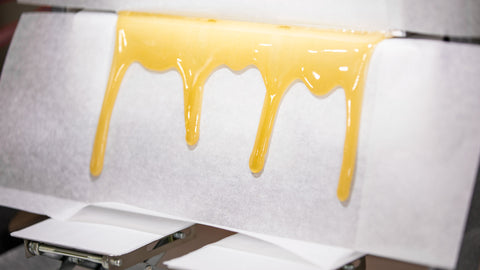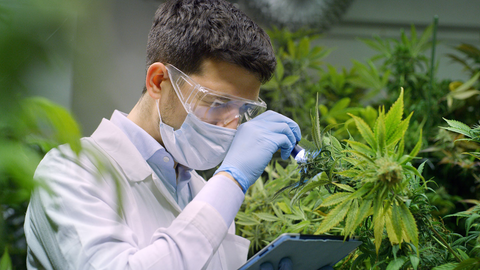Introduction to Solventless Hash Rosin
In the expanding universe of cannabis concentrates, solventless hash rosin has emerged as a premium product, celebrated for its purity and the intricate process involved in its creation. This concentrate, often referred to as Solventless Hash Oil (SHO), is a product of heat and pressure applied to cannabis flowers or hash, resulting in a potent, dab-able substance. The appeal of solventless hash rosin lies in its production method, which eschews the use of external solvents, making it a safer and more natural alternative to other concentrates.
The Origin: Hash
Solventless hash rosin is derived from hash, a concentrated form of cannabis produced by isolating and combining the resin glands, or trichomes, from the female cannabis plant. The purity and color of hash can vary based on the extraction process and the amount of non-trichome plant material involved. Hash can be produced in several ways, including hand-rubbing, dry-sifting, or ice water extraction, also known as bubble hash. Each method leads to a distinct form of solventless cannabis concentrate, offering a unique experience to the consumer.
Hash Production Methods: Hand-Rubbing and Dry-Sifting
Hand-rubbed hash, or Charas, is the oldest form of cannabis concentrate. It is created by rubbing freshly harvested flowers between the hands, allowing resin to accumulate on the palms and fingers. This method, while historical and unique, is time-consuming and not commonly utilized by recreational or medical companies today. Instead, growers in Western countries are more likely to use the dry-sift or ice water extraction methods, which are more efficient and sanitary.
Dry-sift, also known as "kief," is produced by carefully moving dried cannabis buds or sugar leaves across screens. The agitation and friction help separate the delicate trichome glands and stalks from the flower. The screens only allow fine particles to pass through, leaving plant material on top. After repeated sifting and collecting of this powder-like kief through a series of screens with increasingly finer micron ratings, it’s ready to be enjoyed or pressed into dry-sift rosin.
Hash Production Method: Ice Water Extraction
Ice Water Extraction (IWE), also known as 'Bubble Hash', is another method of hash production. There are two types of IWE: Dried/Cured Flower IWE & Live/Whole Plant Fresh Frozen (WPFF) IWE. The concept behind both types of hash is the same: the plant material is rehydrated by soaking and suspending it in ice water, which makes the trichomes cold and brittle. They can then easily snap off the stalks after slight agitation. This process is often carried out in large food-grade plastic bins or buckets, or in specialized stainless steel washers.
From Hash to Rosin: The Pressing Process
The process of creating solventless hash rosin from the hash involves the use of a specialized tool called a 'rosin press'. This device consists of two opposing, temperature-controlled and heated metal plates that are forced together with a hydraulic, pneumatic, electric, or hand-powered pump. The starting material, such as flower or hash, is fit into a filter, sandwiched between a folded piece of parchment paper, and placed between the plates while heat and pressure are applied. This process crushes the cannabis trichomes, causing the waxy membrane to rupture and allowing compounds such as cannabinoids and terpenes to escape onto the parchment paper, which can then be easily collected and consumed as a dab-able product.
Rosin, also known as Solventless Hash Oil (SHO), is desirable to both consumers and producers due to its solvent-free nature and the relatively modest equipment investment compared to solvent-based extraction techniques like Butane Honey Oil (BHO). The safety profile of hash making and rosin pressing is also significantly higher than hydrocarbon extraction due to the absence of explosive solvents. There's no need for an explosion-proof laboratory, although when it comes to Ice Water Extraction, a controlled temperature environment that can reach 50°F is required.
The Versatility of Rosin
Rosin can be produced in a variety of ways, from pressing dried flower to dry-sifting cured buds to make hash to press, as well as extracting both dried & fresh frozen flower via ice water isolation to make “Bubble Hash” to press into rosin. The versatility of the starting materials that can be pressed allows even home processors and medical patients to make their own solventless concentrates with a rosin press.
The Different Forms of Rosin
Rosin typically comes in three forms: flower rosin, dried/cured flower IWE/bubble hash rosin, and live bubble hash rosin/WPFF rosin. Flower rosin is the simplest of all rosin forms and is easily made by pressing dried buds between parchment paper with a rosin press. Filtration isn't always necessary, but it can simplify and speed up the process, preventing major contamination and allowing for higher weights of starting material. Flower rosin often has a darker color and a sappier consistency due to higher pressing temperatures and the introduction of anthocyanins and chlorophyll via plant material.
Dried/Cured Flower IWE Rosin and Live Rosin
Dried/Cured Flower IWE Rosin is made by pressing the resulting hash from an ice water extraction/isolation that uses dried/cured cannabis flowers as the starting material. This process requires the trimmers and extractor to be gentle with the starting material, as the trichomes are easily separated from the stalks, and the plant material is brittle enough to break into pieces as small as the trichomes. High-quality rosin can be made from dried flowers if harvested and stored properly, but dried flower IWE yields suffer as plant matter contracts during drying and trichomes become physically difficult to access and isolate.
The Importance of Cultivar Selection and Live Rosin
Surface area is of much importance when considering which cultivar to wash. Dense buds are less ideal than genetically fox-tailed or borderline “larfy” buds. Intense light increases resin production as well as the density of buds, which is another reason pheno-hunting is so important. Different cultivars have different uses: Some flower is best smoked, some best blasted, some best pressed and some best washed. Cannabis is a versatile plant, and it is up to the extraction technician to determine which pheno will perform best for their custom isolation or extraction processes.
Live Rosin, or Whole Plant Fresh Frozen – WPFF (a misnomer as the roots, stems, and fan leaves are not washed, only the buds and sugar leaves) is one of the highest grades of rosin as it requires a dedicated crop, grown exclusively for resin production, in tandem with a timed and extremely attentive harvesting process where the plants are handled gently and frozen rapidly after chopping down. Extracting “live” plants (even though they are technically “freshly dead” once cut) leads to a higher % yield of flower > hash as well as hash > rosin %, higher terpene content, and an easier-to-handle rosin, also a more translucent/lighter color due to trichome heads being younger (less cloudy or amber due to age.)
The Rise of High-THCa Rosin Extracts in the Hemp Community
The hemp community is also making significant strides in the production of solventless concentrates. They are innovatively breeding and extracting Hemp and High-CBD/Low-THC/Rare Cannabinoid cultivars to create unique products such as Hemp Hash and CBD Rosin/Hemp Rosin. These products can contain a broad spectrum of cannabinoids like CBD, CBG, CBC, CBN, THCv, and their associated acidic forms.
One of the most notable advancements is the production of high-THCa rosin extracts. THCa, or tetrahydrocannabinolic acid, is the non-psychoactive precursor to THC. These high-THCa rosin extracts contain less than 0.3% Delta-9-THC, the psychoactive compound in cannabis, making them legal across most US States. This development could potentially open up a significant new subset of the Hash Community, broadening the range of products available to consumers and offering new opportunities for producers.
The biggest challenge facing Hemp Hash Makers is the lack of quality genetics that produce high levels of resin and desirable terpenes without also containing levels of THC exceeding 0.3%. However, significant research and development are being performed by many breeders and extractors across the globe, and the field is advancing rapidly. The quality of Hemp Hash and CBD Rosin often has a sappier consistency and a darker color due to mainly being grown outdoors, but as the saying goes with hash-making: quality is dependent on the starting material. The principle of "Fire in, fire out" holds true.
Conclusion: The Future of Solventless Hash Rosin In conclusion, solventless hash
In conclusion, solventless hash rosin represents a significant advancement in the world of cannabis concentrates. Its production process, which avoids the use of harmful solvents, results in a purer, safer product that is gaining popularity among consumers. Whether it's derived from cannabis or hemp, and whether it's made from dried flowers or fresh frozen plants, solventless hash rosin offers a versatile and high-quality option for those seeking a potent and natural cannabis concentrate.




Comments (0)
There are no comments for this article. Be the first one to leave a message!